Recent counter insurgency operations and Middle East campaigns have proven arterial tourniquets as both highly effective and safe for the prevention of catastrophic blood loss associated with battlefield limb trauma. Tactical Combat Casualty Care (TCCC) treatment protocols, including the aggressive early use of arterial tourniquets, have resulted in significant reductions in avoidable death from combat wounding. These results, however, were largely observed within asymmetric theatres of war with coalition air superiority and the ability to rapidly evacuate casualties to advanced higher level health facilities.
The recent Russo-Ukrainian conflict has exposed limitations in our current tourniquet doctrine and training. The universal adoption of “high tight and horizontal” tourniquets within the tactical environment of contested mobility and delayed casualty evacuation have resulted in alarmingly high rates of avoidable limb amputation and associated life-threatening tourniquet associated complications.
In the context of Australia’s changing Defence environment and strategic priorities, the battlefield experiences of Ukrainian tourniquet use represent important lessons. Whilst arterial tourniquets are an excellent tool, it is now clearly apparent that change in their use is necessary to meet the requirements of our future operational landscape.
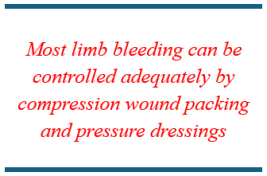
Tourniquets cause harm by a process known as ischaemia. Eliminating blood flow within a limb starves the tissues of oxygen and leads to the accumulation of toxins both from cellular injury and ongoing metabolic activity. This process is time dependent – the longer the tourniquet remains in place, the greater the extent of ischaemic damage. The Tourniquet Traffic Light is a useful tool to understand the time dependent injury patterns associated with tourniquet application. Tourniquets applied for less than two hours rarely cause harm from ischaemia.
Up to 75% of Immediate Action “Hasty” Tourniquets applied high tight and horizontal in combat environments are not medically necessary to control bleeding. Early tourniquet application does save lives and in the context of high threat and time constrained tactical environments, placing a tourniquet prior to complete wound evaluation is entirely appropriate. As soon as practical, however, the wound should be inspected and tourniquet de-escalation procedures instituted.
|
Definitions Tourniquet Conversion: Controlled release of a tourniquet after compression wound packing and pressure dressing application has been conducted. Tourniquet Replacement: Application of a second tourniquet at a level lower than the original, when compression wound packing and pressure dressings alone are insufficient to control high volume bleeding. Compression Wound Packing: Firm internal packing of the entire wound cavity under pressure using gauze, haemostatic dressings or similar devices to obtain direct bleeding control at the site of injury. Immediate Action (IA) Tourniquet: Tourniquet rapidly applied under time constraint for either medical or tactical reasons. Applied high, tight, horizontal and over clothing. Also known as a Hasty Tourniquet (Figure 1). Deliberate Tourniquet: Tourniquet applied in a permissive environment. Applied directly upon skin 5cm above the wound after compression wound packing and pressure dressing application has been conducted. Medically Necessitated Tourniquet: A tourniquet required for the control of high volume bleeding where compression wound packing and pressure dressings are insufficient. Tactically Necessitated Tourniquet: An Immediate Action Tourniquet applied prior to complete wound assessment in a high threat combat environment. Applied to address the potential risk of high-volume bleeding based on the pattern of wounding. Tourniquet De-escalation: A spectrum of skills and techniques used to minimise or eliminate ischaemic harm associated with tourniquet application. |
Tourniquet de-escalation refers to a spectrum of skills and techniques used to minimise or eliminate the harm associated with tourniquet ischaemia. The ideal de-escalation state is Tourniquet Conversion, where the tourniquet is released altogether and blood supply to the limb is restored. If Tourniquet Conversion is unsuccessful and significant bleeding recommences despite compression wound packing and the application of pressure dressings, then the next best option is Tourniquet Replacement, which involves application of a tourniquet in a position lower down the limb and closer to the point of wounding.
This article describes a drill to achieve either Tourniquet Conversion or Tourniquet Replacement. Whilst it may be ideal for tourniquet de-escalation to be conducted by higher level health care providers, tourniquet de-escalation should always be attempted without delay within two hours of application if the tactical environment permits. The Tourniquet Conversion-Replacement drill therefore represents an essential skill for every soldier.
The Tourniquet Conversion-Replacement Drill is conducted in four Phases:
- Immediate Action (IA) Tourniquet Application Phase (Figure 1). Tourniquet is applied high, tight, and horizontal in a casualty with either demonstrated high volume bleeding or where the potential risk of high-volume bleeding exists within a time constrained high threat environment.
- Preparation Phase (Figure 2). Cut clothing from the limb to expose the wound. Direct inspection of the wound together with a description of any bleeding experienced prior to tourniquet application may provide information about injury severity. The wound may be irrigated with water (tap water is suitable). Compression wound packing is conducted prior to the application of a pressure bandage. A second Deliberate Tourniquet is pre-positioned directly upon skin, 5cm above the wound. Slack is removed from the strap of the Deliberate Tourniquet; however, the windlass is not tightened in the Preparation Phase.
- Tourniquet Conversion Phase (Figure 3). Release the windlass of the original Immediate Action tourniquet. Observe the wound closely for a minimum of two minutes for the recurrence of bleeding. A small amount of strike through of the dressings may occur depending on adequacy of the compression wound packing and pressure dressings applied. Most limb wounds can be managed without the requirement of an arterial tourniquet. However, if large volume blood loss is noted through the dressings (dripping or flowing blood), then Tourniquet Conversion is considered unsuccessful, and Tourniquet Replacement is necessary.
- Tourniquet Replacement Phase (Figure 4). Conducted only after unsuccessful Tourniquet Conversion, where compression wound packing and pressure dressings fail to control ongoing blood loss adequately. Tighten the windlass of the pre-positioned Deliberate Tourniquet to achieve bleeding control. Clearly mark the time of tourniquet windlass tightening. The original Immediate Action Tourniquet remains loosely in place but is not retightened if adequate bleeding control is obtained.
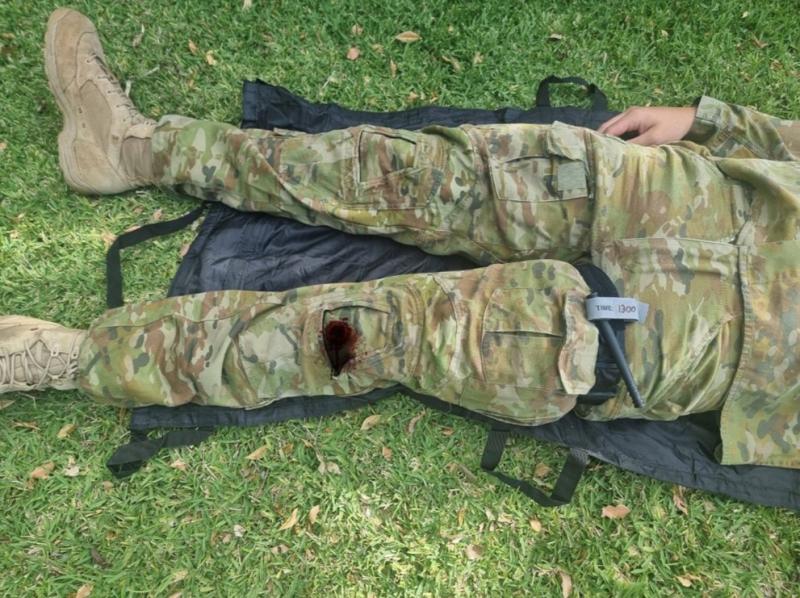
Figure 1: Immediate Action (IA) Tourniquet Application Phase. Tourniquet applied over clothing in a high, tight and horizontal position with the time of tourniquet application clearly marked.
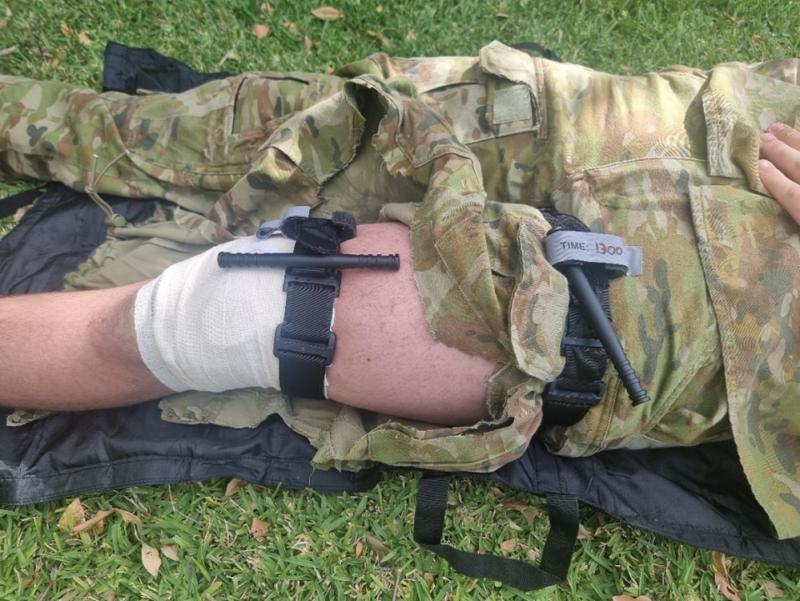
Figure 2: Preparation Phase. Wound exposed and compression wound packing is conducted together with the application of external pressure dressings. The original Immediate Action Tourniquet remains tightened in place. A second Deliberate Tourniquet is pre-positioned directly to skin, 5cm above the wound. The Deliberate Tourniquet strap is firmly secured with slack removed; however, the windlass is not tightened at this stage.
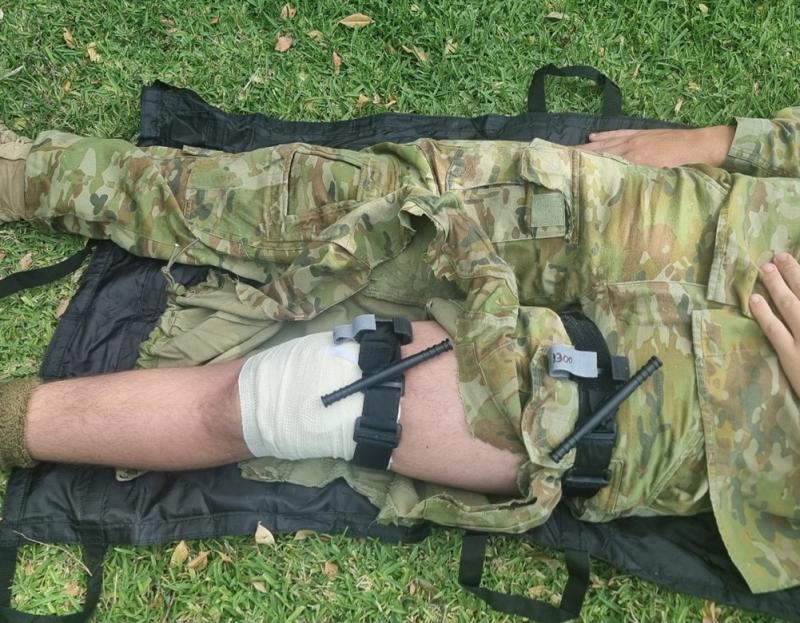
Figure 3: Conversion Phase. The Immediate Action Tourniquet is released. Observe the wound for two minutes to assess potential recurrence of significant bleeding. If minimal bleeding is observed, then both tourniquets are left loosely in place with windlass free and some slack allowed within the straps (able to pass a finger underneath). Stop at this phase if no recurrence of significant bleeding is observed. Regularly observe the wound for re-bleeding.
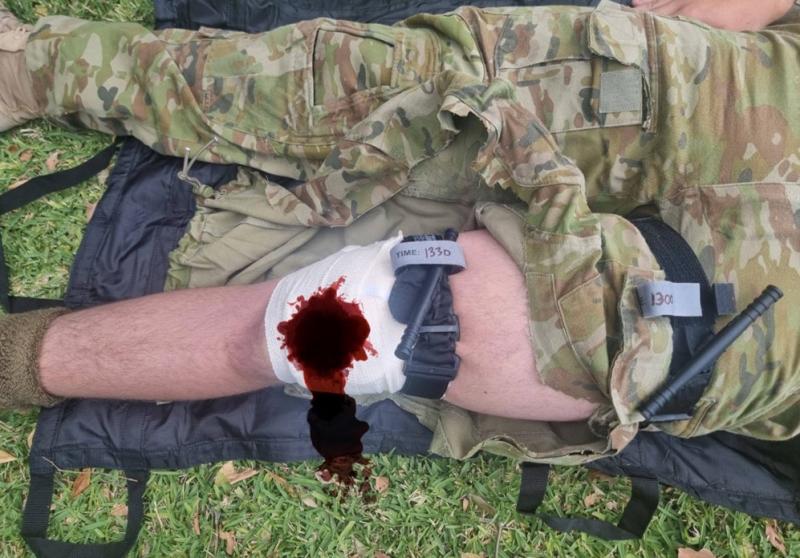
Figure 4: Replacement Phase. Only proceed to Tourniquet Replacement if significant bleeding is observed after release of the Immediate Action Tourniquet. The Deliberate Tourniquet windlass is tightened to prevent further blood loss and the time of windlass tightening is clearly marked. The Immediate Action Tourniquet is left loosely in place with the windlass free and some slack within the strap (easily able to pass a finger underneath).
Principles of Tourniquet Application
- The first line method to control high volume limb bleeding is the application of an Immediate Action Tourniquet.
- Within a high threat environment, if the potential for high volume bleeding exists based on wounding pattern, apply an Immediate Action Tourniquet.
- Tourniquets applied for less than two hours are highly unlikely to cause harm if approved devices and techniques are employed.
Principles of Tourniquet De-Escalation
- Within a permissive tactical environment, de-escalation should be attempted within two hours of tourniquet application.
- Do not attempt tourniquet de-escalation if the casualty is in shock due to severe blood loss.
- Tourniquet de-escalation is ideally conducted by higher level medical providers if available.
- Tourniquet de-escalation after two hours of application represents a high risk intervention that requires advanced medical capability and should only be conducted by appropriately trained and equipped health care providers.
- Continue observing the wound regularly. Severe arterial injuries may bleed intermittently. A tourniquet conversion may initially appear successful however delayed re-bleeding may still occur. In a Prolonged Field Care (PFC) environment, regular external dressing checks are necessary.
- Do not remove compression wound packing or external pressure dressings. If significant volume re-bleeding occurs after tourniquet conversion, then tourniquet replacement is necessary. For low volume blood loss or strike through after tourniquet conversion, simply reinforce the dressing and provide greater compression by adding extra layers. Dressing removal is likely to dislodge blood clots and increase blood loss.
- Unused tourniquets should loosely remain in place. Release the windlass and allow some slack in the strap, enough to allow passage of a finger underneath. If delayed rebleeding occurs, then the tourniquets are already pre-positioned for quick reapplication. The location of the tourniquets and the time signatures of application and release provide useful information for upstream health care providers.
- Tourniquet replacement should still be considered after traumatic amputation. Replacing the tourniquet to a lower level preserves limb length. Stump length and joint preservation are important factors that have impact upon prosthetic design and function.










currently teaches. I rechecked my manuals to make sure I wasn’t going crazy.
I’m not sure what all of the confusion is.
There’s literally no new information in this article and my first TCCC training was in 2005.
Indeed both Tourniquet Conversion and Tourniquet Replacement are techniques described within the TCCC literature. Tourniquet de-escalation as part of a formal training continuum however is far from universal. In many organisations, both civilian and military, tourniquet application and de-escalation training have become decoupled. Consequently, many first responders and health care professionals no longer receive initial or accreditation training in tourniquet de-escalation techniques. "Conversion is an obscure task (in comparison to) tourniquet application.....Conversion is often unclear, unfocussed, skipped or forgotten" (Dr John Kraigh, US Army Institute of Surgical Research, 2022).
As a result, we currently face the position of having an increasing number of providers capable of applying limb tourniquets, without the appropriate safety architecture in place to conduct universal pre-hospital de-escalation in prolonged field care. These pre-conditions represent an organisational vulnerability when operating within warfare environments of contested mobility or extended duration evacuation care. The devastation in Ukraine caused by the failure to universally train and enable soldiers to conduct field tourniquet de-escalation is well documented.
The described technique represents an integrated method of conducting tourniquet conversion with facilitated progression to tourniquet replacement as determined by clinical necessity.
Our current protocols for tourniquet use in trauma have served us well in previous conflicts. Indeed many lives (and limbs) have been saved using the protocols we currently have in place.
We do however need to adapt our protocols in consideration of the increasing threat of large scale kinetic warfare. Tourniquet management in a mobility contested environment with prolonged field care is a complex problem, but a number of solutions exist. An integrated tourniquet de-escalation framework with enhanced point of injury tourniquet management capability represents an important measure to reduce the risk of post-tourniquet application syndrome (PTAS). We are now starting to see similar initiatives being delivered in Ukraine.
Thanks for your commentary. Working on solutions.
More to follow.